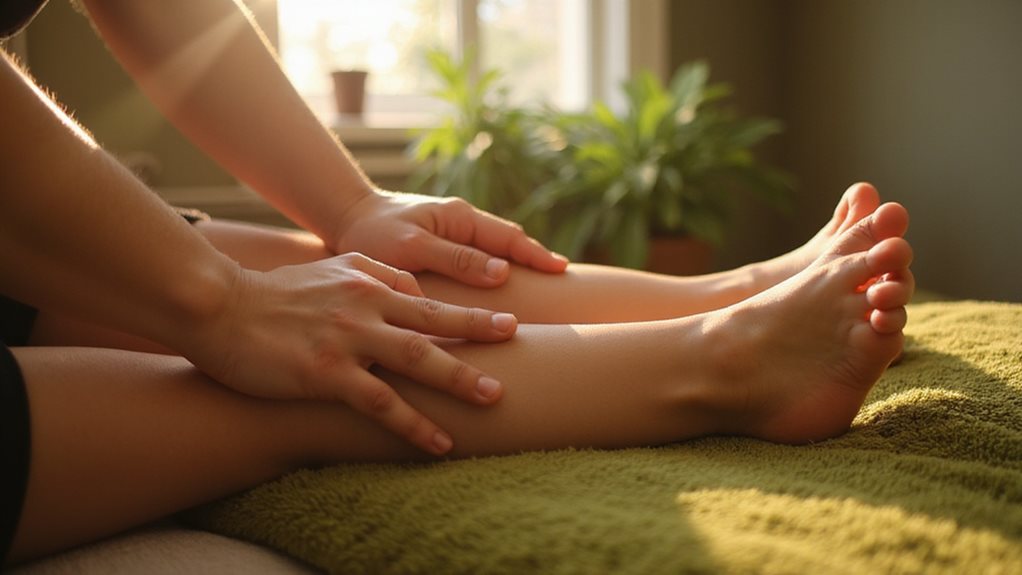As an experienced massage therapist, I’ve witnessed the profound reflexology health benefits that help people heal in a natural, balanced way. Rooted in ancient practices from Egypt and China, reflexology targets reflex points on the feet and hands, activating the body’s innate ability to restore itself. This therapy can ease pain, reduce stress, and improve overall wellness, making it a powerful tool for anyone seeking relief.
While many people focus on relaxation, reflexology’s health benefits extend far beyond that. It’s a holistic practice that can address chronic pain, improve circulation, and even reduce anxiety. With its gentle, noninvasive approach, reflexology offers a nurturing path toward better health and emotional well-being.
Key Takeaways
- Reflexology reduces headache intensity and frequency through targeted foot pressure, offering a noninvasive pain relief option.
- It alleviates back pain by stimulating endorphins and improving circulation for natural pain control.
- Joint aches and stiffness decrease with reflexology, enhancing mobility and reducing inflammation.
- Post-surgical and postpartum pain is eased, aiding recovery and stabilizing hormone levels.
- Reflexology improves overall well-being by reducing anxiety and enhancing blood flow and neural function.
Exploring the Foundations of Reflexology
How did reflexology, a practice rooted in ancient wisdom, emerge as a recognized healing art? Its origins trace back to 2330 BCE in Egypt, where pictographs on Ankhmahor’s tomb depict foot and hand pressure techniques. Ancient China adopted similar therapies for energy balance, while Aboriginal American tribes integrated foot pressure into healing rituals.
Across diverse cultures, these practices surfaced independently, hinting at a universal understanding of reflexology’s health benefits. Passed down through oral traditions, this knowledge fostered a shared sense of wellness and connection among communities. With time, reflexology’s therapeutic value gained recognition, uniting people in a common pursuit of health.
This ancient practice has endured, proving its effectiveness in promoting better health for thousands of people across generations. Today, it stands as proof of humankind’s enduring quest for holistic harmony and belonging through ancient practices.
Natural Pain Relief Through Reflexology
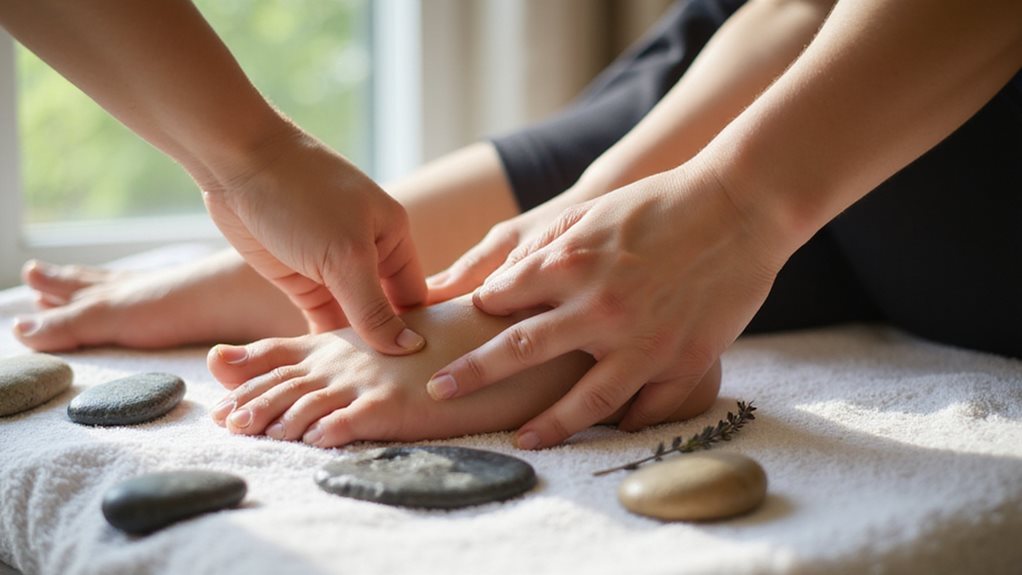
Reflexology offers a compassionate approach to managing pain naturally, targeting specific areas of discomfort with precision. For those suffering from headaches, back pain, and joint aches, this practice applies targeted pressure to reflex zones, potentially easing tension and promoting relief. By stimulating corresponding points on the feet or hands, it aims to restore balance and reduce the intensity of such persistent conditions.
Research has shown that reflexology can be particularly effective for chronic pain. A significant percentage of patients report pain reduction benefits after just one session.
Easing Headache Discomfort
Many people seeking relief from persistent headaches may find a promising solution in reflexology, a noninvasive therapy targeting specific pressure points on the feet. This gentle approach offers a sense of comfort and connection for those tired of conventional treatments. Research supports its effectiveness; a controlled trial with 75 patients revealed that reflexology massage on the foot thumbs substantially reduced the intensity of nitroglycerin-induced headaches compared to placebo and control groups.
The statistical significance of pain scale differences underscores its impact. As a non-pharmacological option, reflexology presents a welcoming alternative for managing headaches without medication. Studies also suggest that consistent reflexology sessions can reduce headache frequency over time, providing a sustainable approach to pain management. For those yearning to belong to a community of natural healing, this therapy holds promise for lasting relief and well-being.
Relieving Back Pain
Exploring natural avenues for relief, people suffering from back pain may find comfort in reflexology, a therapy that targets specific pressure points on the feet to alleviate discomfort. This gentle, noninvasive approach offers a sense of connection to holistic healing, addressing both physical and psychological strains.
Discover why reflexology stands out for back pain relief:
- Reduces stress hormones, easing muscle tension.
- Stimulates endorphin release for natural pain control.
- Improves circulation, supporting tissue repair.
- Modulates nerve signals, altering pain perception.
- Outperforms generic massage in chronic pain management.
Studies show significant pain reduction within days, with sessions often lasting 40 minutes. Research also indicates that reflexology provides higher efficacy compared to traditional treatments like corticosteroid injections for chronic lower back pain. For those seeking a drug-free, low-risk option, reflexology fosters a welcoming path to wellness, uniting body and mind in recovery.
Soothing Joint Aches
People seeking relief from joint aches can find a promising ally in reflexology. This practice extends its benefits beyond back pain to address discomfort in the knees, hips, and other areas. By targeting specific reflex zones on the feet, certified practitioners use systematic pressure techniques to influence nervous system pathways, easing pain perception. This approach, often combined with full-body massage dynamics, improves circulation and promotes healing.
Clinical evidence supports reflexology’s effectiveness, showing pain reduction in knee osteoarthritis, improved vitality in hip conditions, and lower pain scores in rheumatoid arthritis. Randomized controlled trials and WOMAC scores confirm functional improvements and reduced stiffness. For those yearning for natural relief, reflexology offers a supportive, community-backed path to better joint health and comfort.
Easing Headaches With Targeted Techniques
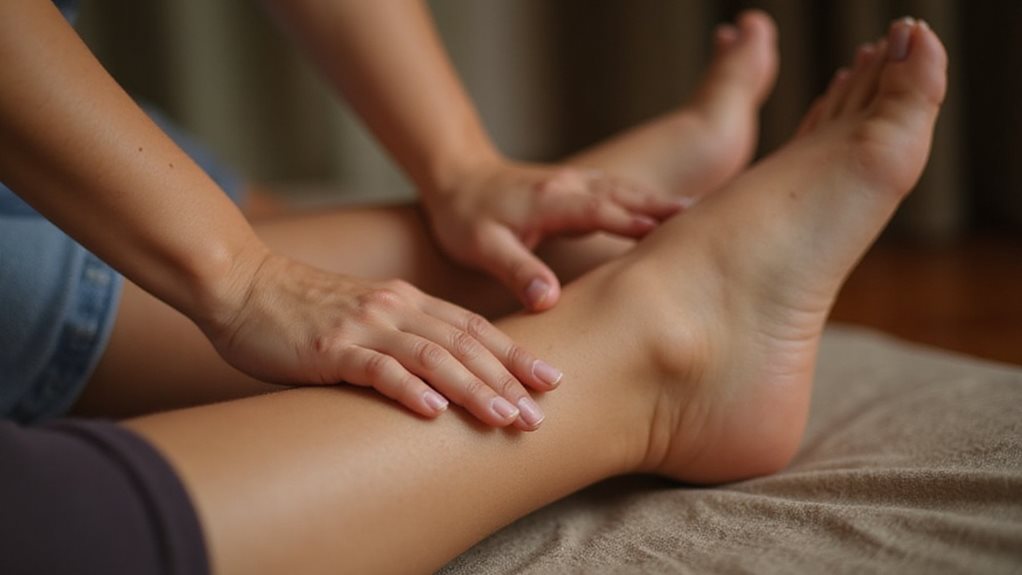
While relentless discomfort can disrupt daily life, eflexology offers a promising approach to relief through targeted techniques. This holistic practice taps into specific pressure points to ease pain and promote relaxation, fostering a sense of connection to one’s healing path. Though scientific evidence remains limited, many find reduced headache frequency and intensity with consistent application.
Research suggests that stimulating these points can help balance the body’s energy flow, potentially offering greater headache relief. Headaches can be debilitating, but reflexology provides hope. This holistic method targets pressure points to ease pain and foster personal healing.
Explore these key reflexology points for relief:
- Liver 3 (Tai Chong): Between the big and index toes, eases stress.
- Union Valley (LI4): Thumb-index finger web, reduces pain.
- Third Eye (Yintang): Between eyebrows, calms migraines.
- Gall Bladder 41 (Zu Lin Qi): Near pinky toe, targets headaches.
- Drilling Bamboo (GB21): Neck base, relieves tension.
Join others in embracing this gentle, supportive path to well-being.
Alleviating Back and Joint Discomfort
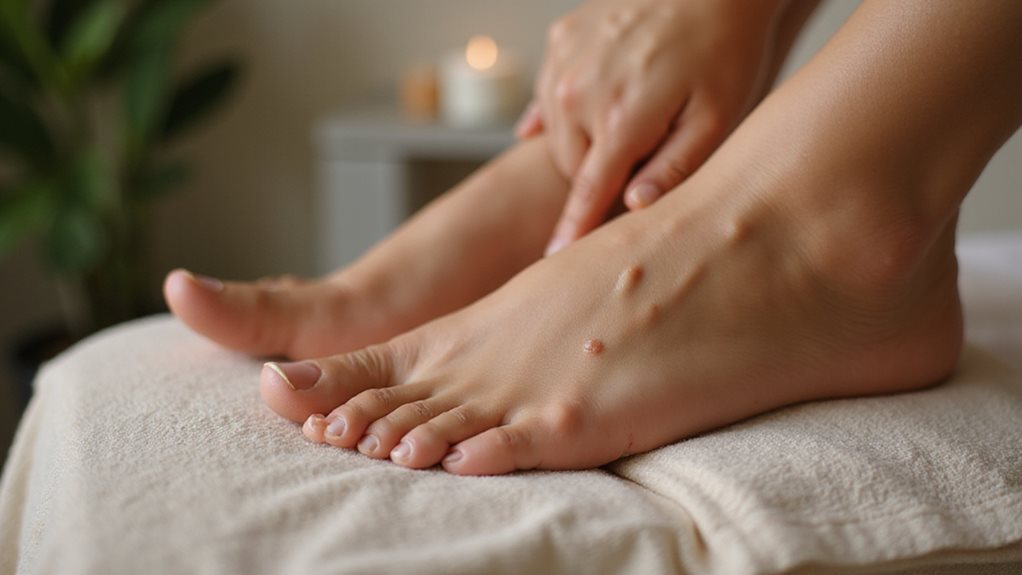
Reflexology offers a promising approach to easing chronic back pain, with research like the University of Portsmouth study showing a 40% reduction in pain through key mechanisms. Additionally, this therapy enhances circulation and nerve activity, which can significantly aid in faster cell regrowth.
Easing Chronic Back Pain
Finding relief can be an overwhelming challenge for countless people grappling with chronic back pain. Reflexology offers a promising, noninvasive solution by targeting specific foot reflex points linked to the spine. This holistic approach not only reduces pain intensity but also enables people to manage discomfort through self-administration after minimal training.
Discover how reflexology can transform back pain management:
- Reduces chronic pain from moderate to mild with targeted pressure.
- Relaxes spinal muscles, easing tension in the upper and lower back.
- Improves circulation to spinal nerves, potentially lowering inflammation.
- Promotes endorphin release for natural pain relief and stress reduction.
- Improves sleep and psychological well-being tied to ongoing pain.
- Research, including a 2015 study, highlights reduced mechanical low back pain after reflexology sessions.
This accessible therapy fosters a sense of control and community in the path toward healing.
Soothing Joint Stiffness
Many people struggling with joint stiffness, often alongside back discomfort, find themselves seeking effective relief without invasive treatments. Reflexology offers a gentle yet powerful solution, as studies reveal a 40% reduction in perceived pain levels among participants. By applying targeted pressure to specific reflex points, this practice alleviates discomfort from inflammatory responses and eases muscle tension caused by injury or overuse.
Furthermore, reflexology stimulates blood flow, enhancing oxygenation to joint areas and supporting tissue healing. This improved circulation reduces chronic inflammation, a common cause of stiffness, while promoting general joint health. Research also suggests that reflexology can lower stress and anxiety, improving sleep quality, which is crucial for overall recovery and well-being.
For those yearning for a sense of ease and connection to their bodies, reflexology provides a holistic approach, addressing both physical symptoms and psychological well-being with compassionate precision.
Supporting Recovery After Cesarean and Labor
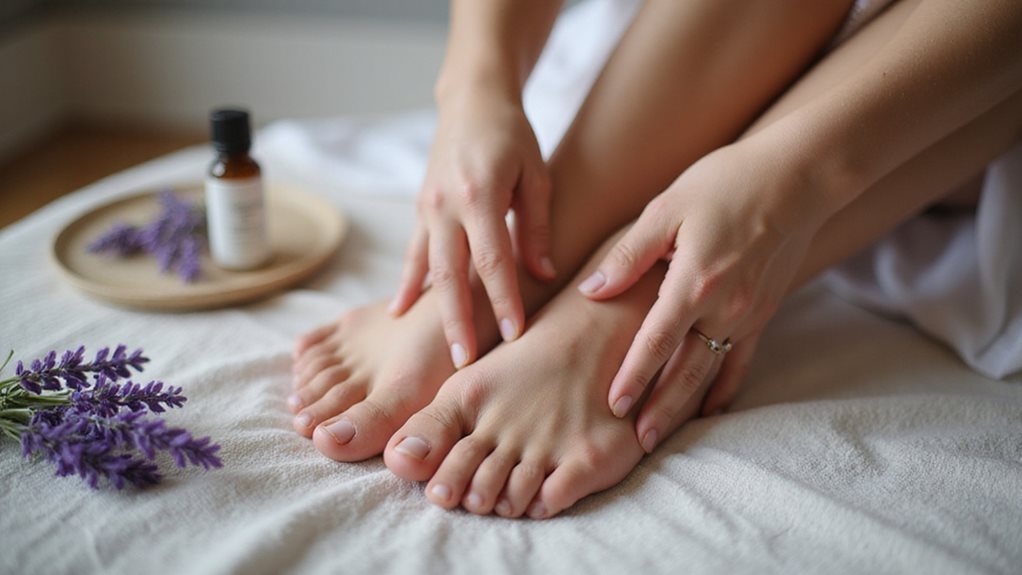
How can new mothers find relief during the challenging recovery period after Cesarean sections or labor? Reflexology offers a nurturing, complementary approach to easing discomfort and supporting healing. By targeting specific pressure points on the feet and hands, this practice helps alleviate pain and restore balance during a vulnerable time.
Are you seeking relief after a Cesarean or labor? Reflexology provides nurturing support, easing discomfort, and restoring balance through targeted pressure on feet and hands.
Discover how reflexology can be a comforting ally for postpartum recovery:
- Reduces post-Cesarean pain intensity, with significant decreases in severity scores (p-values 0.001–0.003).
- Shortens the time to initial urination and defecation after surgery.
- Complements conventional pain management strategies post-Cesarean.
- Eases post-labor pain through targeted pressure techniques.
- Stabilizes postpartum hormone levels, supporting endocrine balance.
Embracing reflexology can provide new mothers with a sense of care and community in their healing path. Additionally, it supports the body’s structural healing processes by aiding in the recovery of wounds and promoting overall physiological balance (aiding wound healing).
Managing Peripheral Neuropathy Symptoms
Reflexology offers a promising approach to easing nerve pain, especially for those grappling with peripheral neuropathy. By applying targeted pressure to specific reflex points, this therapy can help alleviate discomfort and support diabetic comfort through improved circulation and nerve stimulation. For many, it provides a gentle, noninvasive option to manage symptoms and improve general well-being.
Additionally, reflexology may enhance blood flow, delivering essential nutrients and oxygen to affected nerves and tissues, promoting overall healing and improved blood flow.
Easing Nerve Pain
People grappling with peripheral neuropathy often endure persistent nerve pain, tingling, and numbness that disrupt daily life. Reflexology offers a supportive approach by targeting neural pathways through specific foot reflex points, aiming to ease these distressing symptoms. It improves blood circulation to extremities, delivering essential oxygen and nutrients to damaged nerves, while stimulating nerve-rich areas to restore healthy communication with the brain.
Here’s how reflexology can help you feel connected to relief:
- Reduces sharp pains with targeted pressure techniques.
- Alleviates tingling and numbness by improving nerve function.
- Improves balance through better neural signals.
- Improves sleep by easing nocturnal discomfort.
- Desensitizes hypersensitive nerves with rhythmic pressure.
- Relieves chronic discomfort by addressing underlying nervous system coordination.
This gentle practice fosters a sense of renewal, helping people reclaim comfort and connection in their daily lives.
Supporting Diabetic Comfort
Managing the challenges of diabetes often involves addressing peripheral neuropathy symptoms that hinder daily comfort. Reflexology offers a supportive approach by enhancing microcirculation in the extremities through targeted pressure points on the feet. This improved blood flow reduces the risk of complications like ulcers and supports tissue oxygenation, fostering healthier feet for those in the diabetic community.
Additionally, reflexology induces deep relaxation, lowering stress hormones like cortisol, which can aid blood sugar regulation. By stimulating reflex areas linked to the pancreas and hormonal glands, it supports organ function and psychological balance. Gentle hand and thumb techniques provide comfort without harm, creating a nurturing space for people to find relief and connect with others on a similar path.
Research suggests that reflexology may also contribute to pain relief benefits for neuropathy symptoms, offering an added layer of comfort.
Reducing Acute Pain in Vulnerable Groups
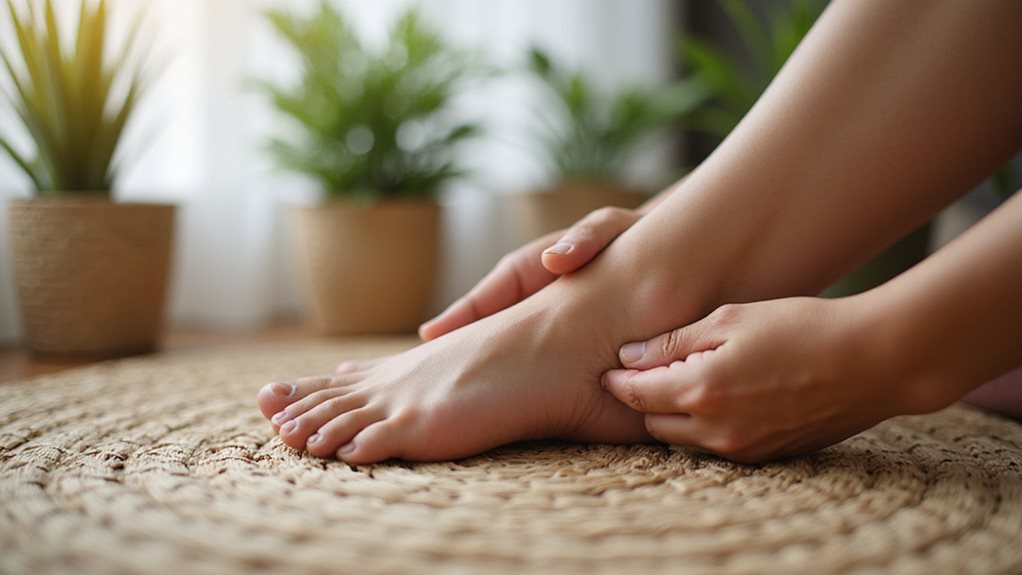
Addressing acute pain in vulnerable groups is a critical concern among the many challenges in healthcare. Reflexology offers a compassionate, noninvasive solution for those in pain, from infants to post-surgical patients, fostering a sense of care and connection.
Consider these impactful benefits of reflexology:
- Post-surgical relief: Reduces pain intensity after lumbar and cesarean surgeries.
- Neonatal comfort: Lowers crying duration and stabilizes heart rates during vaccinations.
- Chronic pain aid: Improves pain scores across diverse conditions like osteoarthritis.
- Physiological support: Improves oxygen saturation and blood flow during interventions.
- Demographic reach: Benefits headache sufferers, mothers, and kidney stone patients.
This gentle practice stands as a symbol of hope, uniting communities in the shared pursuit of healing and comfort for the most vulnerable. Research also shows that reflexology can significantly reduce pain in conditions such as AIDS, chest pain, and osteoarthritis, as evidenced by twenty-seven studies.
Calming Stress and Anxiety Naturally
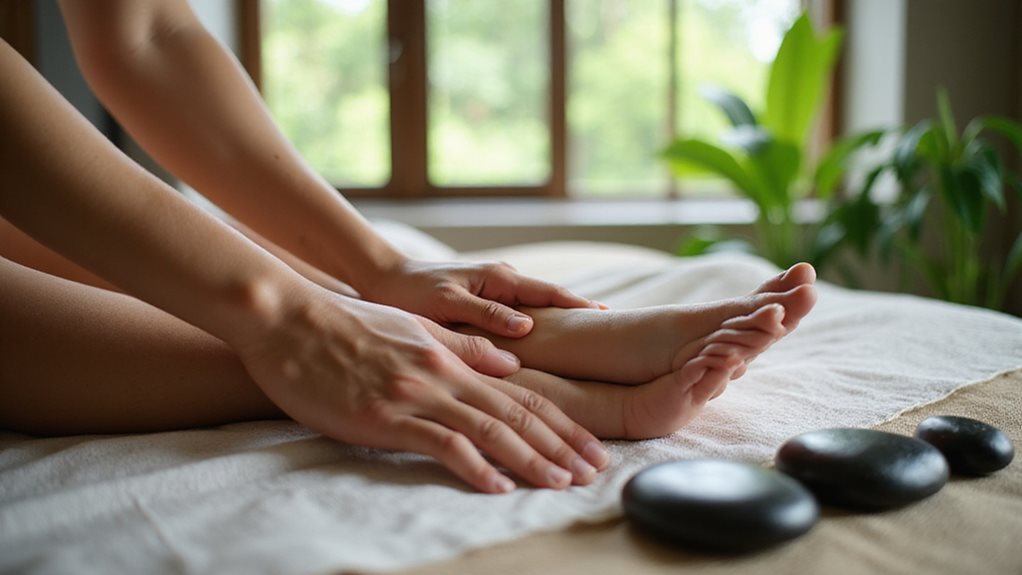
Beyond its role in easing physical pain for vulnerable groups, reflexology also offers a profound remedy for mental and psychological strain. Studies reveal significant anxiety reductions (Hedges’ g = -1.237) in adults, with meta-analyses confirming consistent benefits. By stimulating sensory nerves and enhancing parasympathetic activity, reflexology calms hyperarousal and promotes relaxation, offering a natural path to stress relief. Systematic reviews further support that reflexology can reduce stress symptoms effectively across various populations.
Imagine a serene path through reflexology’s soothing effects with this vivid imagery:
| Setting | Sensation | Impact |
|---|---|---|
| Quiet room | Gentle foot pressure | Tension melts away |
| Soft lighting | Warmth spreads | Mind quiets |
| Soothing music | Rhythmic touch | Breathing slows |
| Comfortable chair | Energy rebalances | Stress fades |
| Caring practitioner | Deep calm settles | Inner peace emerges |
Regular sessions amplify these benefits, fostering a shared sense of tranquility.
Boosting Mood and Emotional Well-Being
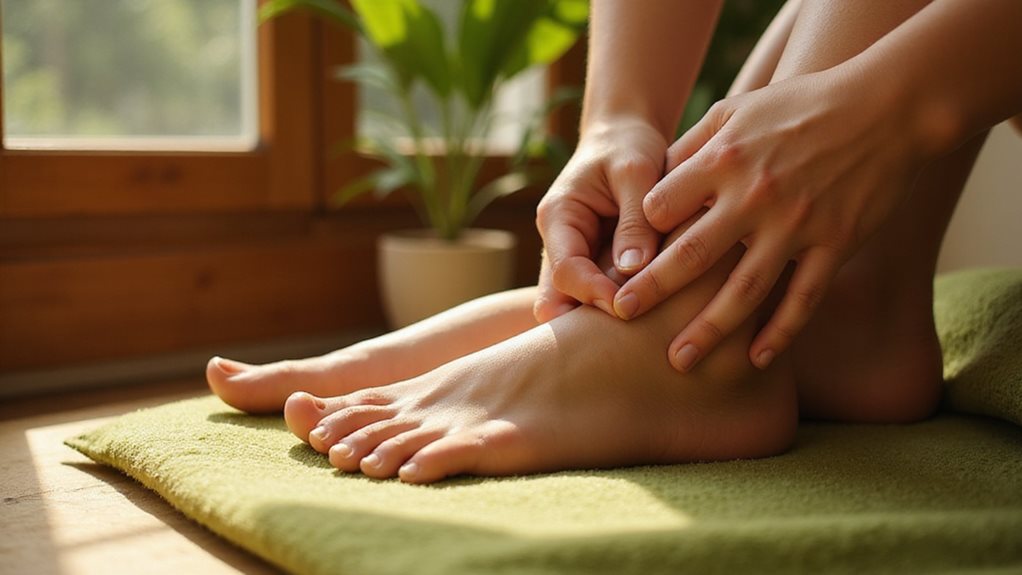
How can a simple touch transform psychological landscapes? Reflexology, a practice rooted in targeted pressure, offers profound effects on mood and psychological well-being. By stimulating specific points, it nurtures the mind as much as the body, fostering a sense of inner peace and connection.
Discover how reflexology uplifts the spirit:
- Promotes serotonin and dopamine release, enhancing happiness.
- Facilitates endorphin surges for natural mood elevation.
- Reduces cortisol, easing the psychological toll of stress.
- Triggers psychological releases, aiding in processing stored trauma.
- Restores psychological balance through holistic healing.
This gentle therapy not only lightens psychological burdens but also supports lasting well-being. Research shows that reflexology can significantly reduce tension in the body, contributing to emotional relief and mental clarity. For those seeking harmony within a supportive community, reflexology offers a pathway to shared healing and psychological renewal.
Enhancing Relaxation With Brain Wave Activity
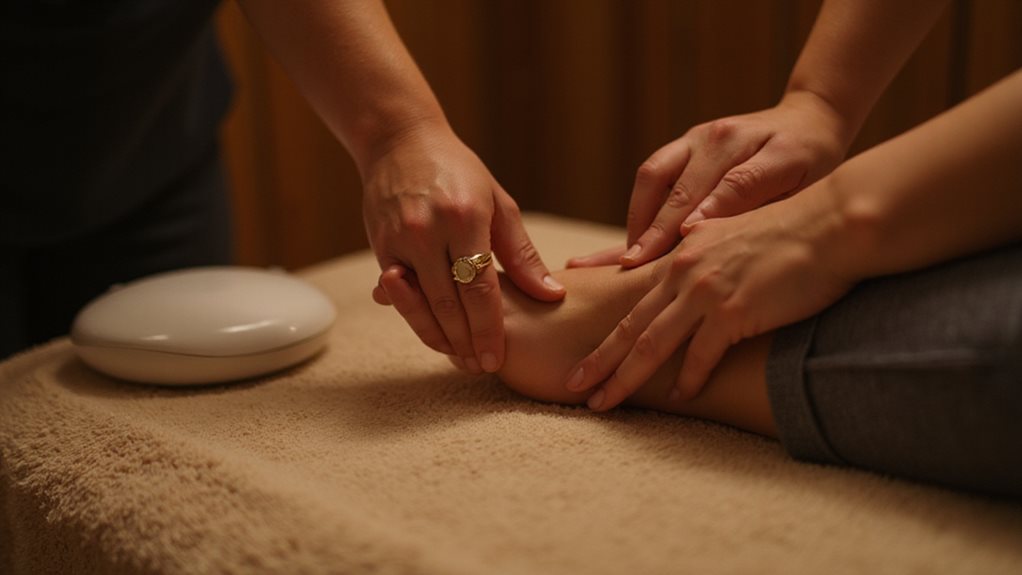
Reflexology’s act on mood and psychological well-being naturally extends to its remarkable ability to foster deep relaxation through shifts in brain wave activity. Research, including EEG studies by Dr. Jesus Manzanares Corominas, shows reflexology increases alpha waves, promoting a calm, meditative state, while theta wave activation supports profound relaxation and psychological clarity. This shift from beta to alpha states reduces stress hormones like cortisol, recalibrating the nervous system to a rest-and-digest mode.
Clients often experience psychological release and mind-body integration, feeling a sense of inner peace. Much like ancient practices, creative reflexology’s sine wave effects offer a modern path to tranquility. For those seeking connection and calm, this therapy provides a nurturing space to unwind and heal.
Improving Sleep Patterns for Better Rest
While reflexology is widely recognized for promoting relaxation, it also plays a significant role in improving sleep patterns for better rest. Many people struggle with sleep issues, and reflexology offers a noninvasive solution. Research shows it reduces sleep latency and improves general sleep quality, particularly in older adults, fostering a sense of calm and connection with one’s being.
Key benefits of reflexology for sleep include:
- Reduces the time taken to fall asleep.
- Improves subjective sleep quality per the Pittsburgh Sleep Quality Index.
- Addresses anxiety and depression linked to poor rest.
- Offers a cost-effective, outpatient-friendly approach.
- Serves as a non-pharmacological alternative to medication.
Combating Fatigue in Challenging Times

Why do so many people feel drained during challenging times, whether due to chronic illness, demanding work, or psychological strain? Fatigue often stems from systemic imbalances, stress, or poor circulation, leaving people yearning for relief. Reflexology offers a compassionate solution by targeting specific foot zones to restore homeostasis, lower cortisol levels, and stimulate neural pathways that combat exhaustion.
Research highlights its impact, showing a 42-point reduction on fatigue severity scales and sustained benefits in conditions like kidney disease or cancer recovery. Enhancing blood flow and triggering endorphin release addresses both physical and mental tiredness. For those seeking renewed energy amid life’s demands, reflexology provides a supportive, evidence-backed approach to reclaiming vitality and a sense of balance within a caring community.
Promoting Overall Wellness Through Touch
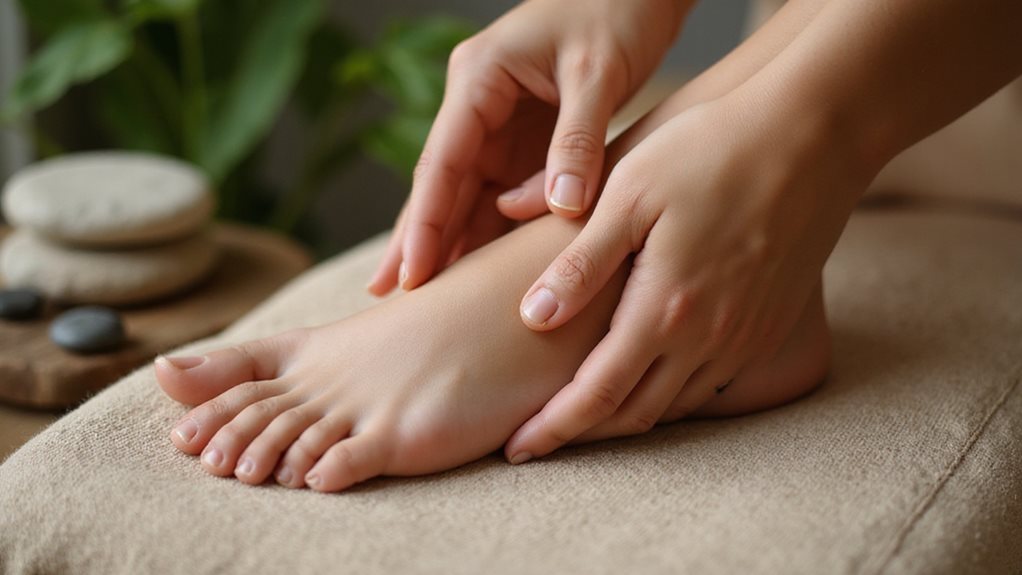
Embracing the power of touch, reflexology fosters holistic wellness by nurturing the body’s capacity for healing. This gentle practice connects people to a sense of balance, easing the burdens of daily life through intentional, therapeutic contact. Engaging specific pressure points offers a pathway to inner peace and vitality, inviting everyone to experience a shared path of well-being.
Discover how reflexology promotes general wellness through touch:
- Activates the parasympathetic nervous system, inducing calm.
- Reduces cortisol levels, alleviating stress effectively.
- Improves mental clarity, sharpening focus and perspective.
- Encourages relaxation, fostering a more profound sense of ease.
- Strengthens community bonds through shared healing experiences.
Through these benefits, reflexology becomes a unifying practice, supporting both body and mind in harmony.
Frequently Asked Questions
Can Reflexology Help Relieve Anxiety and Stress?
Yes, reflexology is effective for managing anxiety and stress. Stimulating reflex points that correspond to the nervous system helps balance the body’s stress, promoting deep relaxation and emotional well-being.
Can Reflexology Help With Digestive Issues?
Reflexology can indeed assist with digestive issues. Studies show it alleviates constipation, IBS symptoms, and bloating in many people, especially the elderly. Targeted foot zone techniques promote bowel regularity, offering a noninvasive approach.
What Are the Reflexology Health Benefits for Sleep Disorders?
Reflexology can help improve sleep by promoting relaxation and reducing stress. Targeted pressure on specific reflex points encourages better circulation and the body’s natural rhythms, leading to more restful, rejuvenating sleep.
Is Reflexology Safe During Pregnancy?
Reflexology is generally safe during pregnancy for managing pain and anxiety, though caution is advised with specific pressure points. Evidence shows no risk of inducing contractions, offering reassurance to expecting mothers seeking relief.
How Often Should Reflexology Be Practiced?
How often should one practice reflexology for ideal well-being? Frequency depends on personal needs—weekly for acute issues, bi-weekly for ongoing support, or monthly for maintenance. Let’s find that heal.
Can Reflexology Aid in Weight Loss?
Can reflexology aid in weight loss? Studies suggest it may support modest weight reduction, alongside diet, by reducing stress and improving metabolic markers. However, its impact often lacks statistical significance compared to exercise.
Does Reflexology Improve Immune Function?
Research shows reflexology may reduce sympathetic activity by up to 20%, aiding immune function. This therapy supports circulation and stress relief, fostering wellness. Join a community exploring these gentle, promising paths to health.
Conclusion
In a world where stress often binds us, reflexology emerges as a gentle liberator, revealing wellness through touch. Coincidentally, as weary feet tread a path of reflex points, a burdened mind finds release, mirroring a river breaking winter’s winter. Winter’s scientific practice, rooted in precise care, nurtures body and soul, fostering balance. It stands as a quiet ally, guiding communities toward natural healing and renewed energy in challenging times.
